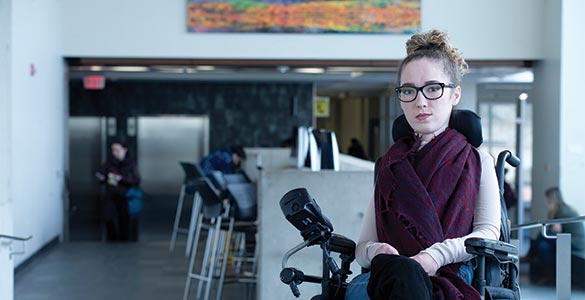Pushing
past barriers
Sydney Mills-Cooper
At 18 months, Sydney Mills-Cooper was diagnosed with spinal muscular atrophy, a degenerative condition that causes a gradual loss of muscular control and strength. By the age of four she was in a wheelchair.
But Sydney was determined not to be defined by her condition. She went to kindergarten at the Catholic elementary school down the street from her home in Ajax, Ontario. Her family declined the school’s offer to pick her up in the school bus, not because they had their own wheelchair-friendly vehicle but because she wanted to do what her friends were doing: walk to school.


